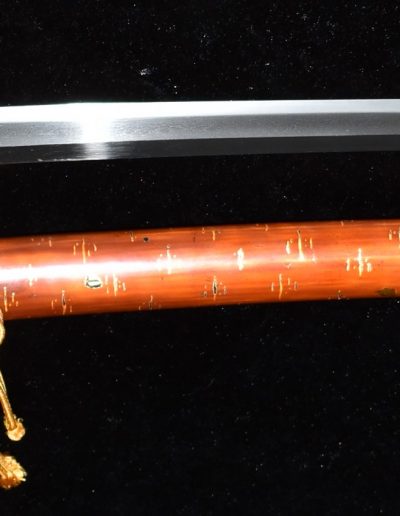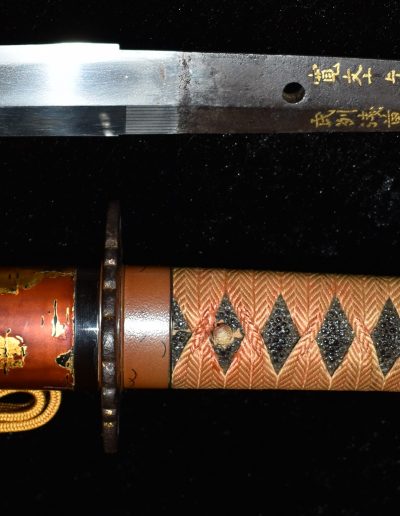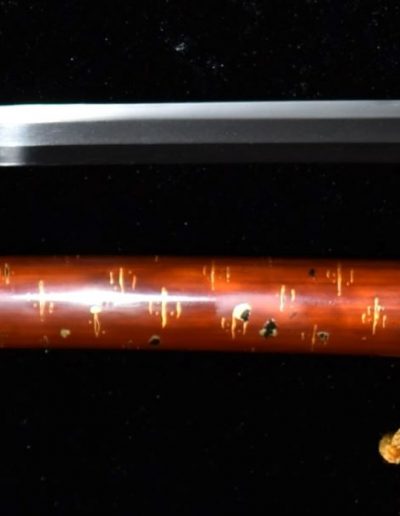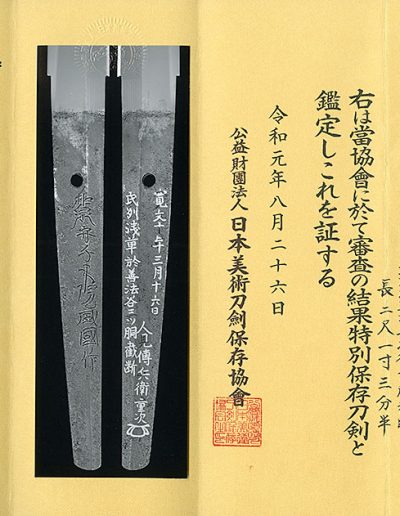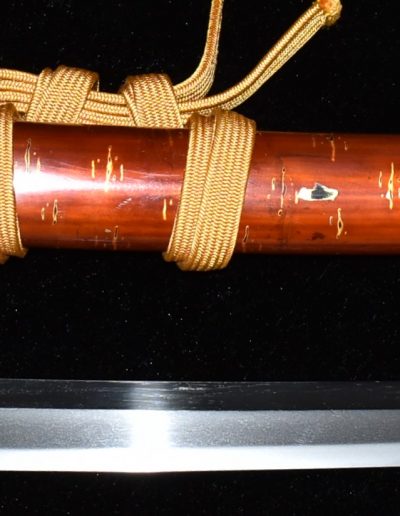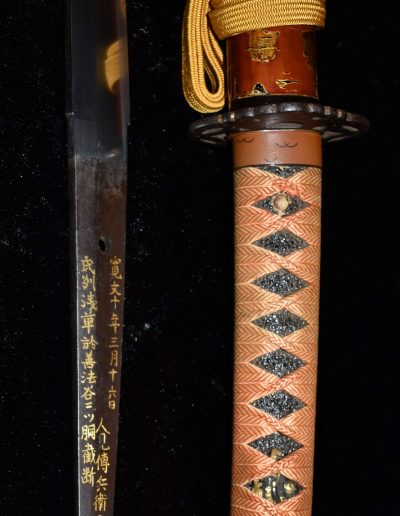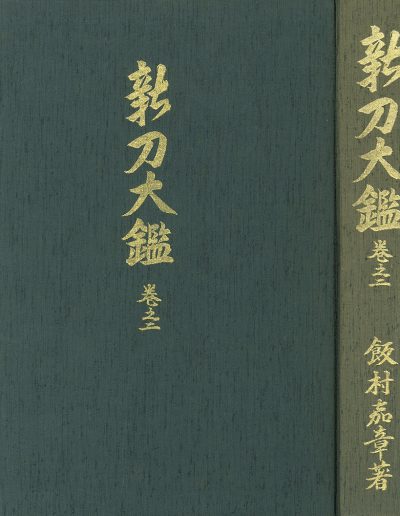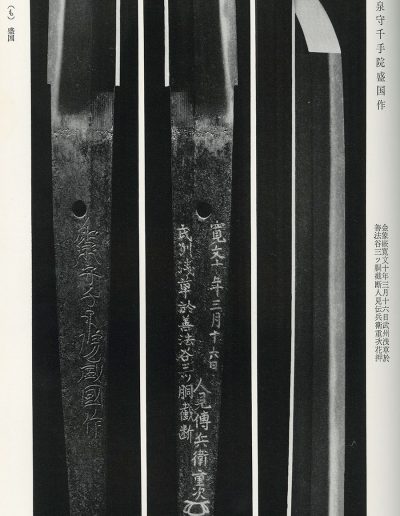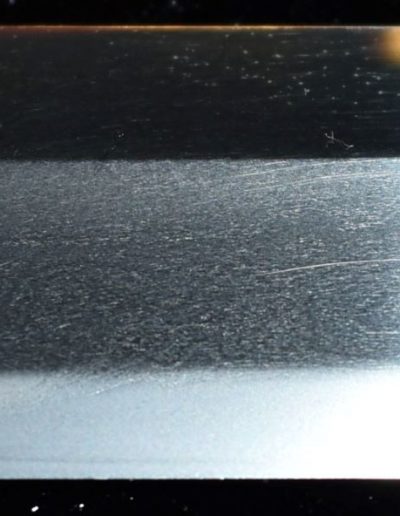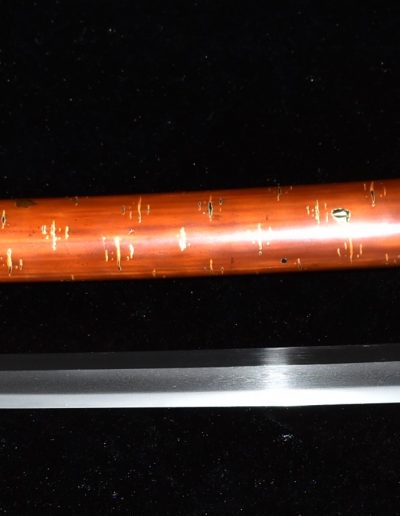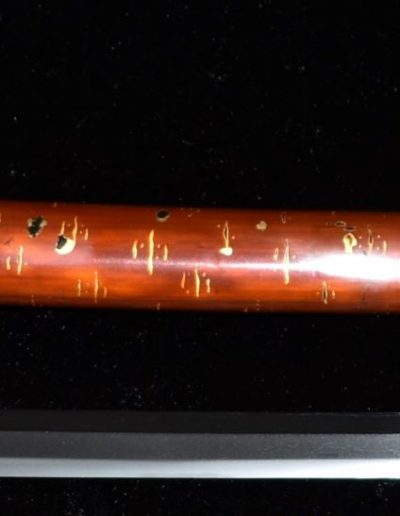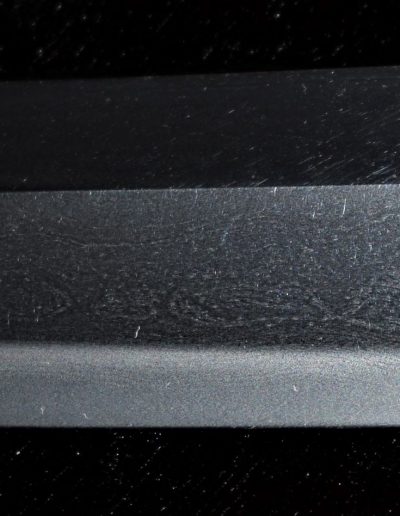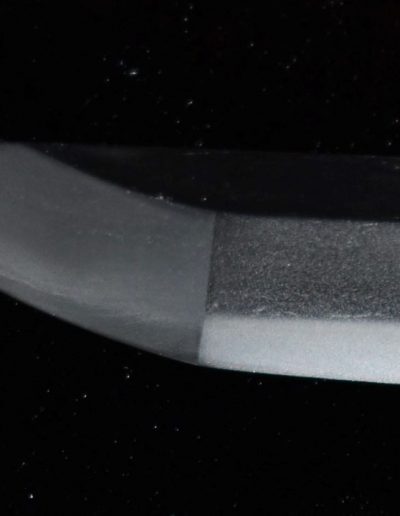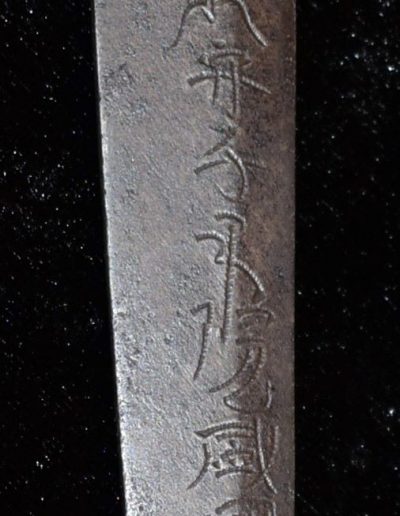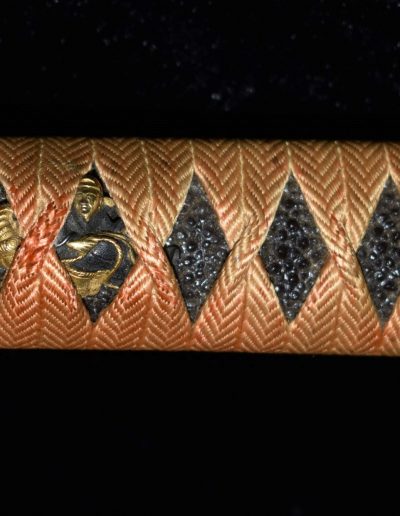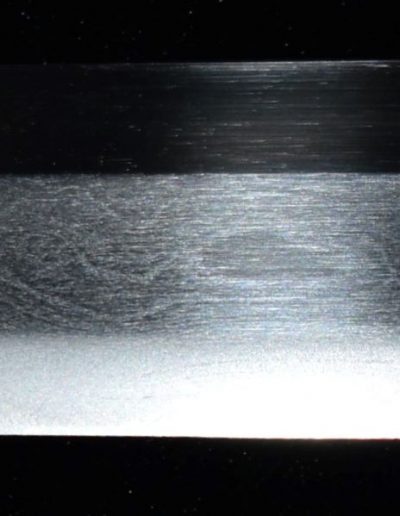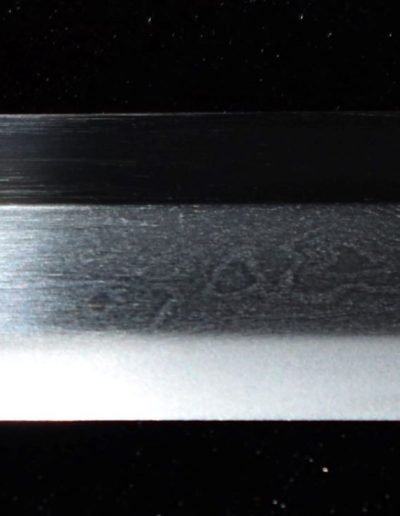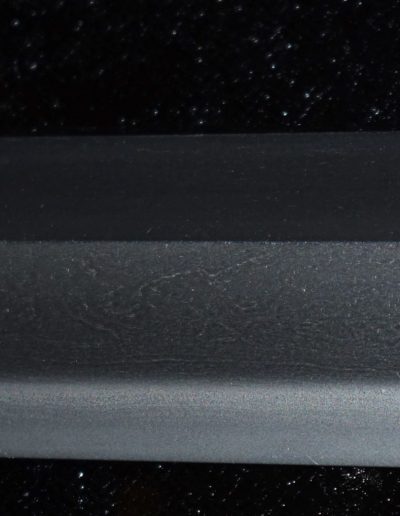Sold
Senjuin Morikuni Katana with cutting test published in the Shinto Taikan
NBTHK Tokubetsu-Hozon Tōken Translation
KANTEI-SHO (鑑定書) – APPRAISAL
No 1012012
Katana, signed: Izumi no Kami Senjuʼin Morikuni saku (和泉守千手院盛国作)
‒ “Made by Izumi no Kami Senjuʼin Morikuni”
Gold inlaid inscription: Kanbun jūnen sangatsu jūrokunichi ‒ Hitomi Denbei Shigetsugu + kaō ‒
Bushū Asakusa Zenpōdani ni oite mitsu-dō setsudan
(寛文十年三月十六日・人見伝兵衛重次「花押」・武州浅草於善法谷三
ツ胴截断) ‒ “Hitomi Denbei Shigetsugu cut [with this blade] on the 16th day
of the third month of Kanbun ten (1671) in Zenpōdani, Asakusa,
Musashi province, through three bodies + monogram”
nagasa ~ 64.7 cm
According to the result of the shinsa committee of our society, we judge this work as authentic
and rank it as Tokubetsu-Hozon Tōken.
August 26, 2019
[Foundation] Nihon Bijutsu Tōken Hozon Kyōkai, NBTHK (日本美術刀劍保存協會)
Shintō Taikan (新刀大鑑), Volume 2
Tōkaidō (Musashi)
Katana, signed: Izumi no Kami Senju’in Morikuni saku (和泉守千手院盛国作)
– “Made by Izumi no Kami Senju’in Morikuni”
Gold inlaid inscription: Kanbun jūnen sangatsu jūrokunichi – Hitomi Denbei Shigetsugu + kaō –
Bushū Asakusa Zenpōdani ni oite mitsu-dō setsudan
(寛文十年三月十六日・人見伝兵衛重次「花押」・武州浅草於善法谷三
ツ胴截断) – “Hitomi Denbei Shigetsugu cut [with this blade] on the 16th
day of the third month of Kanbun ten (1671) in Zenpōdani, Asakusa,
Musashi province, through three bodies + monogram”
Measurements: nagasa 65 cm, sori 0.9 cm, motohaba 3.0 cm, kasane 0.6 cm, weight 656 g
Shape: shinogi-zukuri, iori-mune, chū-kissaki, shallow sori, normal mihaba, thin kasane, high shinogi
Nakago: ubu, sujikai-yasurime, slightly round maru-mune, kurijiri, one mekugi-ana
Jigane: standing-out itame that is mixed with nagare and with masame along the habuchi, also ji-nie
appears
Hamon: nie-laden chū-suguha with a tendency towards hakikake
Bōshi: sugu to notare with hakikake at the kaeri
Explanation:
Morikuni is also referred to as “Edo-Senju’in.” His workmanship resembles that of Kotetsu
and [Izumi no Kami] Kaneshige and in terms of skill, he ranks right after Kaneshige and [Yamato no
Kami] Yasusada. Morikuni hardly hardened a flamboyant hamon and his rather unobtrusive
interpretations that simply aim at cutting ability reflect thus the typical approach of Edo-shintō
works.
MORIKUNI (盛国), Kanbun (寛文, 1661-1673), Musashi – “Izumi no Kami Minamoto Morimasa” (和泉守源守正), “Izumi no Kami Senju´in Minamoto Morikasa tsukuru” (和泉守千手院源守正造), “Kōshō Kunnai ni oite Hachiman´yama Senju´in Yamato no Kami Minamoto Morikasa saku” (於甲州郡内八幡山千手院和泉守源 守正作), “Izumi no Kami Senju´in Morikuni saku” (和泉守千手院盛国作), “Izumi no Kami Morikuni kore o tsukuru” (和泉守盛国造之), he was a late smith of the Akasaka-Senju´in lineage and came originally from Kai province, later he moved to Edo where he studied according to tradition under Izumi no Kami Kaneshige (和泉守兼重), he signed in early years with the name Namen Morimasa (守正), from the point of view of workmanship we can see common elements with Kaneshige, Kotetsu (虎徹), and Kazusa no Suke Kaneshige (上総介兼重), he signed in a peculiar manner with noticeable wavy and rounded-off strokes.


